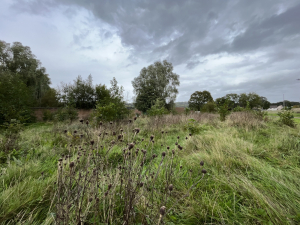
Biodiversity Net Gain (BNG) policy set out under the Environment Act 2021 is due to come into force in January 2024. Most planning applications will be required to demonstrate that biodiversity net gain of 10% has been achieved, e.g. by planting trees, wildflower meadows, etc.
North Somerset Council's (NSC) Corporate Plan, p7 states, "Weston-super-Mare – our largest town is set to become the second biggest settlement in the West of England over the next decade." At the 04 October public meeting in the Town Hall, Cllr Mike Bell, Leader of North Somerset Council, confirmed that this would be second to Bristol!
How will this huge increase in planned housing/development, with its 'associated nature' offsetting of 10% BNG, affect rural communities? How will this affect farming and food production as landowners are encourgad to diversify from using their land for agriculture to using it for 30 year BNG 'nature' projects?
| Consultation | Opens | Closes | Information | |
| Biodiveristy Supplementary Plan | 16 Oct 23 | 27 Nov 23 at 5pm | "Developers are encouraged to consider the potential of their development in making a contribution to the biodiversity objectives and targets for particular types of habitat and species found in North Somerset." Biodiversity SPD Consultation Document |
| Farming Crisis & Documentary | & | Food Security | Food Chain Loses? | NSC Proposal | Related Guidance | BNG Credits | Langford Mega Solar Dev |
There is no mention of farming, agriculture or protecting food production in this North Somerset Council Biodiversity consultation, yet our farming is in crisis?
BOB Biodiversity SPD Consultation response
Draft Rural Strategy Considerations
- "The UK’s self-sufficiency is ‘slipping’, with many growers reporting receiving minuscule return" ... "As NFU president Minette Batters put it in December, the very existence of British food production is now “under threat”
- "A petition calling on retailers to provide a fairer deal to the UK's struggling farmers has reached over 50,000 signatures, but supermarkets are yet to respond." - To Reform the Grocery Supply Code of Practice to better protect farmers (Ends 14MAR24)
- Farming Charity sees Alarming Increase in Calls for Help.- Lincolnshire Rural Support Network says "...many of the calls are related to money and debt. However, the area that has seen the biggest growth – a 229% increase – is stress and mental-health related concerns". (23OCT23)
- Tokenisation of the countryside via Biodiversity Net Gain Credits
- What is NSC doing to protect farming and local food production, is it protecting its farmland or selling it off, e.g. for development? (See land let as smallholdings by local authorities across England)
- The European Commission states, "Grasslands absorb carbon dioxide during growth of the grass plants and store it in the different tissues. The majority of the aboveground biomass will be eaten by grazing animals and the carbon will eventually return to the soil as manure or to the atmosphere via enteric fermentation." (PDF)
Dutch govt plan to forcibly purchase and close 3K farms to comply with EU emissions mandate (04MAY23) | Farmers driven to suicide Documentary Overview | Irish govt suggests culling 65,000 cows yearly to achieve emissions targets |
NO FARMERS NO FOOD - poorer local and national economy
No Land No Food
As meat, dairy and vegetarbles stop being grown locally, increasing food costs, more people will be driven towards food banks. Governments longer term solution, UK insect eating 3D printed food (e.g UN 2013)
What can NSC and its Policies do to HELP small and medium sized local farming and food security?
How has reliance increased on food banks in the UK in the last 5, 10, 20 years as food prices increase?
- House of Commons 18OCT23, "The Trussell Trust, an anti-poverty charity that operates a network of food banks across the UK, reported a 37% increase in the number of three-day emergency food parcels it distributed between 31 March 2022 and 1 April 2023, compared to the year before. This continues a general trend of increasing need for food parcels. In 2021/22 there was an increase of 14% compared to the year 2019/2020, before the Covid-19 pandemic. The increase in the year 2020/21 was caused by the pandemic, while the most recent increase is due to the cost of living crisis." (Overview and 18OCT23)
- Population Pyramids of the World (e.g. UK, Europe, Africa, Asia, N America, Oceania & World
- How does farming fit with biodiversity plans such as 30 by 30 (or 30x30) a worldwide initiative for governments to designate 30% of Earth's land and ocean area as protected areas by 2030 (.e.g. UK Govt An extraordinary challenge: Restoring 30 per cent of our land and sea by 2030 (26JUL23 - p32)
- How will the control of water affect local farming? (E.g. UK Govt Plan for Water:- 'farm' mentioned over 100 tiimes (04APR23))
- How will SMART meters be used to monitor, restrict and punish farmers and residents to meet these sustainability goals? e.g. Energy firms pay out £11m after not fitting enough smart meters: Have customers had enough? Do they have the powers to forceably install meters to monitor and micro-manage residents? (10NOV23)
What is the role and priorities of North Somerset Council with regards to protecting communities and local food security?
- Does energy security (solar) trump local food security?
- Does nature recovery (e.g. 10% BNG) trunp local food security?
- Does carbon reduction (net zero) trump local food security?
- Does methane and nitrogen reduction (net zero) trump local food security?
- Have any long-term real-world trials or research (decades) been undertaken proving on large scale areas that the BNG approach of people managed land will give the desired output and not invaisive plant species (brambles) and/or increase in vermin (rats)? Or have assumptions been based on scaled up computer modelling?
- Why put solar panels on agricultureal fields at the same time as putting grass on urban roofs?
In order to be food secure, it appears that the UK cannot afford to lose any agriculture land and indeed needs to increase vegetable and fruit production. (See also the NSC Local Plan consultation)
North Somerset is already covered with 'green' agriculture land | NSC plan to cover fields with solar panels and developments? Where is the food mapping? | NSC map shows fields in use for food production... so why destroy local food production? |
Local Plan and Net Zero Blogs | ||
- There is no mention of food security in NSC's Biodiversity SPD Overview, only that, "There needs to be security of the delivering for biodiversity offsetting projects. The Environment Act requires that any enhancements or provision are maintained for at least 30 years after the development is completed" (Para 8.2.3 p35)
- The UK government states, "... food security means strong and consistent domestic production of food combined with a diversity of supply sources that avoids overreliance on any one source... Home-grown produce is the largest source of food for the UK... In meat, milk, and eggs, the UK produces roughly equivalent volume to what it consumes. In 2020 it produced 61kg of meat, 227L of milk and 172 eggs per person per year ... The UK produces a significant proportion of its other crop needs, including around 60% of sugar beet, 70% of potatoes and 80% of oilseeds... The UK produces over 50% of vegetables consumed domestically, but only 16% of fruit." (05OCT23).
UK Govt Powering Up Britain Energy Security Plan,
- "The Government seeks large scale ground-mount solar deployment across the UK, across the UK, looking for development mainly on brownfield, industrial and low and medium grade agricultural land. Solar and farming can be complementary, supporting each other financially, environmentally and through shared use of land. We consider that meeting energy security and climate change goals is urgent and of critical importance to the country, and that these goals can be achieved together with maintaining food security for the UK. We encourage deployment of solar technology that delivers environmental benefits, with consideration for ongoing food production or environmental improvement. The Government will therefore not be making changes to categories of agricultural land in ways that might constrain solar deployment." (p38) [Reference to grades 1, 2 or 3a and mapping e.g. for NSC] and...
- "We encourage deployment of solar technology that delivers environmental benefits, with consideration for ongoing food production or environmental improvement." pg38 (MAR23)
Environment Act 2021 (10NOV23)
- "1(3) The regulations may specify a commodity only if the Secretary of State considers that forest is being or may be converted to agricultural use for the purposes of producing the commodity." (p291)
- "2(5) The regulations may specify a local law only if it relates to the prevention of forest being converted to agricultural use" (p292)
- "17(2) A review must consider in particular— (a) the amount of forest being converted to agricultural use for the purposes of producing commodities (p299)
- "17(2)(b) the impact of the relevant provisions on the amount of forest being converted to agricultural use for the purposes of producing forest risk commodities" (p300)
What is the food chain losing by the proposed NSC plans?
- What is the land currently contributing to food security?
- DP53 Best & Most versitile land in Draft pg 181 "The proportion of Grade 1 land in North Somerset is approximately 7% and 10% for Grade 2. 60% falls in Grade 3..." How much of this land is already in use as food production for people and animals? How much land will be lost if NSC's Local Plan and associated Biodiversity plans happen?
- What arable and/or pastoral farming is currently supported?
- What has been supported over the last 10 years?
- When was the land last producing food for animals or people?
- Can beef and dairy cattle graze the same land as solar panel?
- What will happen to local and national dairy products if the land only supports sheep? (milk, cheese, yoghurt, butter, spreads, etc.)
- How much infrastructure is required to install, support and maintain a field of thousands solar panels?
- concreting in solar panel supports? electrical wiring? sub-station wiring?
- how much does rainwater runoff concentrate on the land? how much erosian over the 25 year life span? How much potential leeching of into the soil?
- Will local generatiional farming skills be lost? What will happen over the 25-40 year lifespan of the solar panels and/or BNG projects?
- who are the mahority of investors in these large local solar and BNG projects? do they have a genuine interest in the local community or is it just a planning obligation and/or financial investment that can ultimately break rural communities?
- how do commercial these investments affect public access and views to the countrysiide?
- how do structures in fields (solar arrays) affect birds of prey hunting, as they need large open areas to swoop and large independent areas to sustain current and future populations.
- how are small mammals affected - structures will change the balance of that ecology, some mammals will thrive at the expense of others, upsetting the natural balance (e.g. an increase in rat population due to more urban style shelter under solar panels? How would this population be controlled e.g. rat poisons?)
- how do the change in wildflowers, plants, etc. affect the types of species that can then survive in that hababit?
- how will desktop AI deal with the above if no ecologist input is given?
- over 20-40 years lifespan of the panels and BNG projects, how are natural invasive species such as brambles controlled, with chemicals be used? e.g. glyphosate - "a widespread herbicide used by farmers to control weeds and as an alternative to ploughing, which disturbs the life beneath the soil and releases carbon (but has pupport food production locally for generations since the bronze age)"? (14JUN23)
- if glyphosate is used, along with panel run off, the soil may become contaminated, what will happen to the sheep, lamb that is eaten, and future agricultural use if/when the panels are decommissioned?
- how long will the land need to recover after decommisioning? Months, years or decades?
- what happens to the millions of solar panels afterwards and the toxic chemicals contained within them? "The toxic chemicals in solar panels include cadmium telluride, copper indium selenide, cadmium gallium (di)selenide, copper indium gallium (di)selenide, hexafluoroethane, lead, and polyvinyl fluoride" (30APR18 and 22AUG20)
- CPRE The problem with solar farms - the factors that should be considered in determining applications (2021)
- if the aim is to increase biodiversity via BNG how does this offset any potential loss of species on the original site, e.g. new structures and/or solar panel installations (whether mammals, insects, plants, etc.)?
NB: NSC support solar and installion companies and so should therefore be able to answer the following questions:(as mailed to residents Resident Letter, Leaflet1, Leaflet2)
North Somerset Council Biodiversity SPD proposal states -
"Biodiversity Net Gain policy set out under the Environment Act 2021 is due to come into force in January 2024. Most planning applications will be required to demonstrate that biodiversity net gain of 10% has been achieved. This will be submitted to the council together with a Biodiversity Gain Plan, as part of the planning application. (Biodiversity SPD Consultation Document) No mention of how this works with agricultrure in the rural community food produciton or security?
The current SPD dates back to November 2005 and is therefore in need of a comprehensive update, particularly in light of the council’s 2019 declaration of a Climate Emergency and Nature Emergency in November 2020.
- NB "s. At the very least, all development must deliver a net gain in line with Policy CS4 of the Core Strategy" (p27)
Government Definition of Biodiversity Net Gain (BNG)
- Govt Biodiversity metric: calculate the biodiversity net gain of a project or development (PDF)
- The Biodiversity Metric 4.0 (JP039) (PDF)
- The Small Sites Metric (Biodiversity Metric 4.0) (PDF)
- NSC Biodiversity & Trees Planting including Bleadon List of Wildlife site p11-12 (PDF)
- DEFRA Consultation on Marine Biodiversity Net Gain (2022, privacy, letter)
- UK pushes protections for international marine biodiversity (20SEP23)
- BNG for Local Authorities including video (02NOV23)
Biodiversity Net Gain (BNG) Public/Business/Charity Webinars:
- Wednesday, 25 October, 1-2pm Creating Biodiversity Corridors Through Our Cities (PDF)
- NSC plans for the city include green roofs and living walls (p42) but solar panels on green fields in rural areas?
- Thursday, 26 October, 10-11:30am Unlock the Hidden Potential of Your Land: Biodiversity Net Gain (PDF)
- what happens to agricultural inheritence?
- what if you cannot maintain the land for the full 30 year agreement? e.g. illness, death?
- does agriculture inherence tax change if the land becomes a BNG project?
- what are the penalties? who enforces them e.g. NSC Corporate Plan income?
- Monday, 30 October, 12:30-1:30pm Biodiversity Net Gain for Buyers (PDF)
- Bristol Avon Catchment Market (6 min video)
- iIs the greatest risk with the landowner/farmer to maintain the land/biodiversity'credt' for 30 yearss at the same or better level?
- "If there is failure to deliver, or attempt to deliver, biodiversity net gain outcomes which are secured through planning legal agreements or planning conditions, the Council will take the appropriate and necessary action to ensure compliance." (p37)
- Tuesday, 31 October, 10-11am Innovation Showcase: Tools to Support Biodiversity Net Gain (PDF)
- what are the dangers of using satellite imagery and remote sensing data interpreted by AI computer modelling rather than using proffessional ecologists and 'ground truth data'? (PDF)
- Gentian
How does the UK BNG approach achieve the same goals as the Dutch, Irish and Sri Lankans seen in the documentary above, or reduction of exports due to war, with a resulting local farming crisis and increased suicides?
- E.g. UK farmland voluntarily taken out of production for 30+year, whereas
- the EU approves Dutch plan to forcibly close farms,""Farmers who decide to close their holdings must guarantee they will not start up livestock farming operations elsewhere in the Netherlands or within the EU" (04MAY23) -- Even if their family and or the nation is in a food crisis and potentially starving?
- The Malaysian government banned fertilisers and put the country into poverty, famine and suicides. Fertiliser ban decimates Sri Lankan crops as government popularity ebbs (03MAR22)
- Ukraine Food crisis grows as spiralling prices spark export bans
- Palm oil prices soar as Indonesia curbs exports
- Ukraine bans wide range of agricultural exports "LVIV, Ukraine, March 9 (Reuters) - Ukraine's government has banned exports of rye, barley, buckwheat, millet, sugar, salt, and meat until the end of this year, according to a cabinet resolution published on Wednesday."
- Serbia bans exports of wheat, corn, flour and cooking oil
- Yara curtails fertiliser output in Italy and France (09MAR22)
----
See also:
- NSC Green Infrastructure Plan (BOB Blog)
- NSC Empowering Communities Strategy v2 and Action Plan LR (PDF)
- NSC Joint Health and Wellbeing Strategy HWBS action plan (PDF)
- NSC Local Plan Consultation (Blog)
- Plans are advancing to build two mega solar farms at Yanel Farm 66ha (163 acre) and at Honeyhall Farm 67ha (over 165 acres), a total of 133ha (328 acres)
- NB The total area of NSC smallholdings land as at 31 March 2022 amounts to 166ha (410 acres). Do these two Langford solar developments alone cover nearly the equivalent of the whole of NSC held farmland, i.e. 133ha Langford solar developments vs 166ha NSC smallholdings?
- What stops the remaining NSC farmland also be built on?
- Has any NSC farmland been indentified to be built on in the NSC Local Plan (e.g. pink/solar, yellow, redorange & orange/wind or red/housing mapped area)?
- Compare with 333ha in 2007, a halving of the total NSC farmland in 15 years? (NSC Smalholdings/Farmland Summary info)
- How is this protecting local food security and future food production/farming?
- If the proposed Local Plan go through, will the whole of this area in pink below potentially be solar?
- "Local Plans, prepared by a local planning authority in consultation with its community, set out a vision and a framework for the future development of an area. Once in place, Local Plans become part of the statutory development plan. The statutory development plan for the area is the starting point for determining local planning applications."
- Does this mean that residents are less able/unable to overturn any solar, wind, housing, etc. planning application, as potentially no appeal will be held as it has already been agreed in NSC's Local Plan? (PDF)
- Solar Company Food Security Argument (SEP22)
- NSC Local Plan mapping shows Solar, wind, housing,etc but NO food layered interactive map? See Govt suggested base mapping post-1988 and NSC base mapping vs NSC Food Growing map from its NSC Green Infrastructure Strategy (p126)
- Langford Yanel & Honeyhall Solar Farms

Combined Mega Solar Farm Applications
Tick boxes on left of NSC app

NSC Solar, wind & housing Local Plan
Tick boxes on left of NSC app
- 22/P/1450/FUL - Proposed development of a 49.9MW solar farm and associated infrastructure. | Land At Yanel Farm Churchill Green Churchill North Somerset Consultation Deadline Thu 25 Aug 2022.
- Developer Website states, "The site covers 66 hectares of land classified as lower grade agricultural land (3b and 4) and is suitable for sheep farming" (PDF)
- Natural England BNG Related Response (27AR23)
- Yanel Biodiversity Net Gain (BNG)
- 23/P/2159/FUL - Honeyhall Solar Farm - Proposed Installation and operation of a renewable energy generating station comprising ground-mounted photovoltaic solar arrays and battery-based electricity storage containers together with a switchgear container, inverter/transformer units, a substation, site access, internal access tracks, security measures, access gates, other ancillary infrastructure and landscaping and biodiversity enhancements, with a widened gated access at the junction of Brinsea Green Farm and Brinsea Lane. | Land At Brinsea Green Farm Brinsea Lane Congresbury Consultation Deadline Thu 23 Nov 2023 Biodiversity Enhancement Plan - aka very large glass fields with planted margins
- Large solar farm over 165 acres (67ha) of farmland (Honeyhall Solar Farm (SEP23 & 02NOV23)
- Developer Website.(PDF)
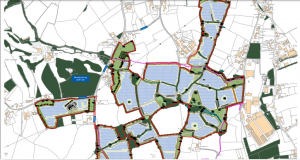
- (enlarged image and very large pdf detailed file 6MB)
- CPRE The problem with solar farms - the factors that should be considered in determining applications (2021)
Gloucesterhire County at risk of becoming ‘Solarshire’ due to number of photovoltaic panels (25OCT23)
- "The Forest of Dean District Council has been approving plans for solar farms on a case by case basis. But there has been an accumulation of planning applications to develop such sites on fields either side of the B4215 road between Newent and Highnam. And if they are all approved it could create a corridor of one million solar panels ...
- During the meeting, the council agreed to prepare a draft Local Plan based on their new strategy for future approval and consultation in 2024."
- Previous consultations
Land let as smallholdings by local authorities across England
- NSC land included in 72nd annual report to Parliament on smallholdings in England, 1 April 2021 to 31 7 March 2022 26JUL23, 71st 2020-21 & 07SEP23 amendments, 64th & 2013/14, 61st in 2010/11, 60th in 2009-10, 57th in 2006/7,
- Hansard Farm Summary 2006-7, and Hansard Small Holdings Colonies Volume 30: debated on Tuesday 4 June 1918
- DEFRA Land Ownership & Tenure (09NOV23)



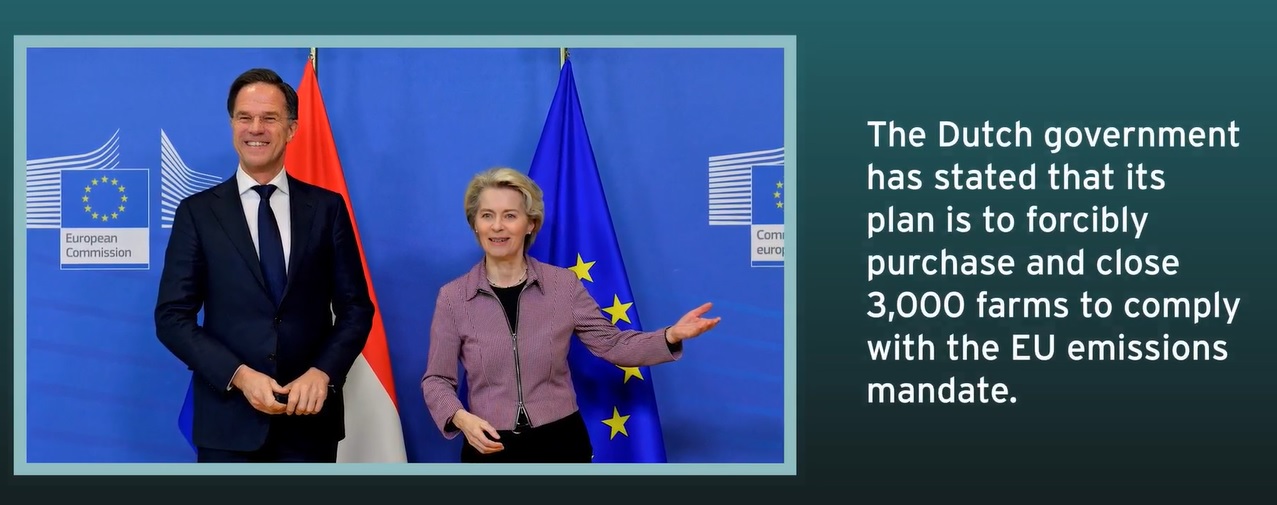
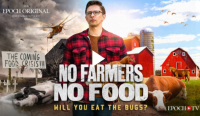
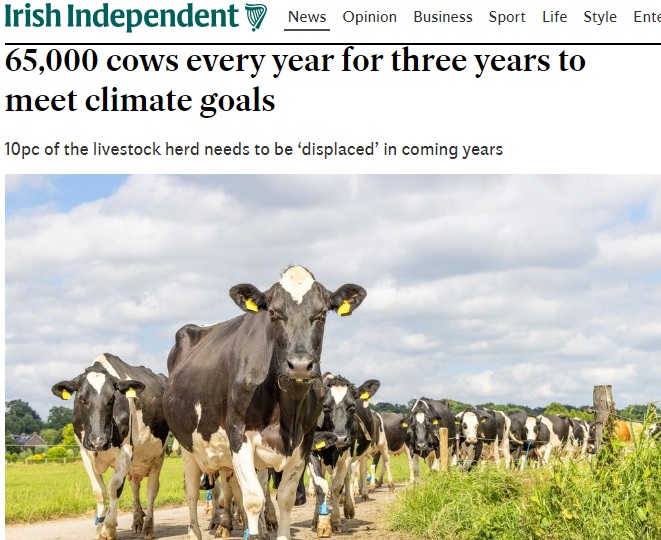
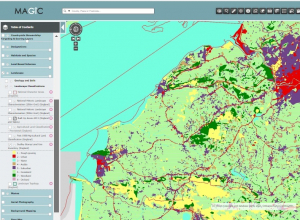
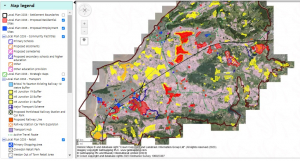
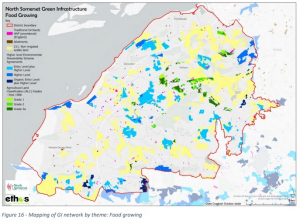
Make A Comment
Comments (0)